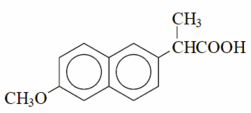What is cirrhosis?
If the liver is damaged, scars can form. When the liver has a lot of scar tissue, blood will not easily flow through it. Cirrhosis is the name for a scarred liver. (Say this: sir-oh-sis.) Cirrhosis keeps the liver from working the way it should. A liver with cirrhosis can't make enough of some proteins your body needs. It can't remove enough harmful toxins (poisons) from your blood. It can't help your blood to clot normally.
What causes cirrhosis?
Cirrhosis is most often caused by heavy use of alcohol or by an infection (usually with the hepatitis B or hepatitis C virus). Some medicines and chemicals can hurt the liver. Diseases that weaken the immune system and some inherited diseases can damage the liver.
What problems can cirrhosis cause?
* People with cirrhosis bruise easily because their blood does not clot the right way. When these people have a cut, it may bleed for a long time.
* Blood vessels around the esophagus (in the throat) and the intestines can stretch and become thin. If these blood vessels burst open, the result is a dangerous amount of bleeding.
* Because the liver is not working right, toxins build up in the blood. They can hurt your brain. People with cirrhosis are also more likely to get liver cancer.
* If the cirrhosis is so bad that the liver stops working, the only treatment is a liver transplant.
* Cirrhosis can cause death. According to the American Liver Foundation, cirrhosis is the 8th leading cause of death in the United States.
Can any of these problems be prevented?
If you have cirrhosis, it may be possible to avoid, or at least slow down, many of the problems caused by cirrhosis. Here are some things you can do to feel better for a longer time:
* Don't drink any amount of alcohol of any kind.
* Ask your doctor about getting important vaccines, like hepatitis A vaccine, hepatitis B vaccine, pneumococcal vaccine (to help prevent pneumonia) and influenza vaccine (to help prevent the flu). Hepatitis A infection is very dangerous for people with liver damage.
* Tell your doctor about every medicine, vitamin and herbal remedy you are taking. Many medicines and herbal remedies are dangerous to people with cirrhosis (see the list in the box on the next page).
* Follow a low-fat, "heart-smart" diet. Foods that are low in fat, oil, and salt are good for your liver and your heart.
* Work with your doctor to set up a health care routine. In addition to your regular doctor visits, you will need tests at least once a year to check your liver and your risk for bleeding problems.
Where can I get more information about chronic liver disease and cirrhosis?
For more information, you can contact the following groups:
COPYRIGHT 2001 American Academy of Family Physicians
COPYRIGHT 2001 Gale Group



